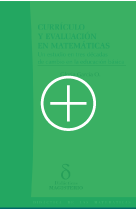
Strategic Litigation Manual
From Theory to Practice, Lessons from Colombia and Lebanon
| Autores: | Saghieh, Nizar Karamé, Lama Eslava, Gabriela Albarracín, Mauricio Barragan, Maryluz |
Materia:340.5 - Sistemas legales
Clasificación Thema::LX - Derecho: guías de estudio y revisión
Público objetivo:Profesional / académico
Colección:Cartilla
Disponibilidad:Disponible
Estatus en catálogo:Próxima aparición
Publicado:2021-03-15
Número de edición:1
Número de páginas:76
Tamaño:21x28cm.
Precio:$40.000
Encuadernación:Tapa blanda o bolsillo
Soporte:Impreso
Idioma:Inglés
Libros relacionados
Conciliación - Idrobo Guaca, Adela
De los derechos reales y sus limitaciones en la legislación colombiana - Ortiz Agudelo, Carlos Severiano; Rodriguez Polo, Nancy
La función Notarial en el Departamento del Meta: Guía integral sobre la competencia territorial del notario - Galindo Olmos, Sandra Patricia; Villa Arias, Luz Amparo; Rosero Hernández, Edisson
Nuevas formas de familia y su goce efectivo de derechos - Barrera Carrascal, Ana Oliva
Reseña
“Strategic Litigation Model: From Theory to Practice, Lessons from Colombia and Lebanon” aims to address every step of the process of strategic litigation. The first part discusses how to select a strategic case and its components; followed by part two, which provides practical insights on the litigation itself; and the part three explores the post-decision phase. In that sense, the manual contains ten key steps that should be developed in a human rights litigation strategy. These steps include identifying the injustice to be remedied, envisioning the goal, developing a legal strategy, selecting the parties, assessing risks and resources, collecting evidence, developing legal arguments, building an outreach strategy, ensuring that a win is effective or investing in a loss and, learning and retooling. The manual presents a theoretical conception of each of these steps, followed by an illustration of real case examples gathered from the litigation experience of Dejusticia and The Legal Agenda, allowing the reader to understand strategic litigation in theory and practice. This model is not meant to be prescriptive and it is based in our practice on litigation. It is intended to be used as a toolkit to be improved upon with lessons learned from every case. As learning is a key pillar of this model, we encourage readers to retool the model and keep improving it with each new case they pursue.




